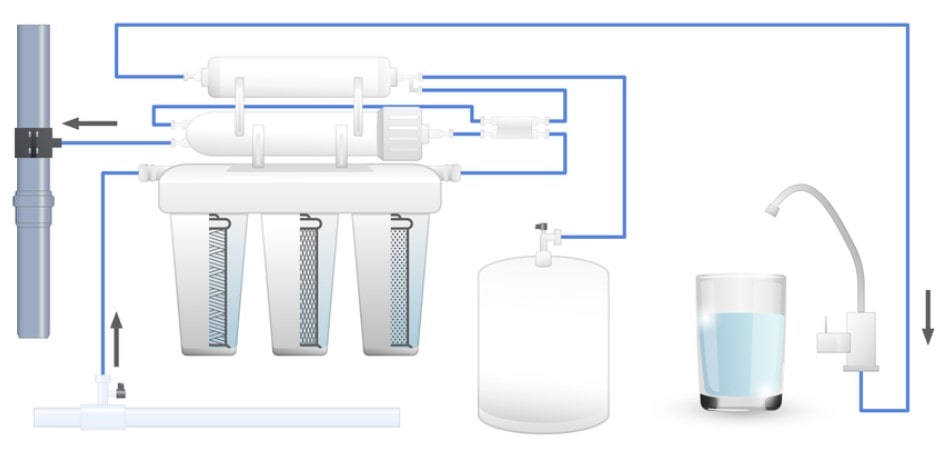A filtration is a unique unit mechanical or physical process of separating suspended and colloidal particles from fluids (liquids or gases) by interposing a medium through which only the fluid can pass. It is a process that removes particles from suspension in water. Removal takes place by a number of mechanisms that include straining, flocculation, coagulation, sedimentation, and surface capture. Filters can be categorized by the main method of capture, for example, exclusion of particles at the surface of the filter media (straining), or deposition within the media. (in-depth).
When the proportion of solids in a liquid is less, the term “clarification” is used. It is a common operation that is widely employed in the production of sterile products, bulk drugs, and liquid oral formulation. The suspension of solid and liquid to be filtered is known as the “slurry”. The porous medium used to retain the solids is described as the filter medium; the accumulation of solids on the filter is referred to as the filter cake, while the clear liquid passing through the filter is the filtrate. The porous medium used to retain the solids is known as a filter medium. The accumulated solids on the filter are referred to as filter cake and the clear liquid passing through the filter is filtrate. The pores of the filter medium are smaller than the size of particles to be separated. Therefore, solids are trapped on the surface of the filter medium. After a particular point of time, the resistance offered by the filter cake is so high that it stops the filtration.
Filtration is also used to describe some biological processes, especially in water treatment and sewage treatment in which undesirable constituents are removed by absorption into a biological film grown on or in the filter medium as in slow sand filtration.
Table of Contents
Water Filtration Process
During filtration in a conventional down-flow depth filter, wastewater containing suspended matter is applied to the top of the filter bed. As the water passes through the filter bed, the suspended matter in the wastewater is removed by a variety of removal mechanisms. With the passage of time, as material accumulates within the interstices of the granular medium, the head-loss through the filter starts to build up beyond the initial value. After some period of time, the operating head-loss or effluent turbidity reaches a predetermined head loss or turbidity value. The filter must be cleaned (backwashed) to remove the material (suspended solids) that has accumulated within the granular filter bed. Backwashing is accomplished by reversing the flow through the filter. A sufficient flow of wash water is applied until the granular filtering medium is fluidized (expanded), causing the particles of the filtering medium to abrade against each other.
Classification of Filtration Process
- Depth filtration:
- (i) Slow sand filtration.
- (ii) Rapid porous and compressible medium filtration.
- (iii) Intermittent porous medium filtration.
- (iv) Recirculating porous medium filtration.
- Surface filtration:
- (i) Laboratory filters used for TSS test.
- (ii) Diatomaceous earth filtration.
- (ii) Cloth or screen filtration.
- Membrane flirtation:
Mechanisms of Filtration
The mechanisms whereby particles are retained by the filter medium are of significance only in the early stages of liquid filtration. Once a preliminary layer of particles has been deposited, the filtration is affected by the filter cake. The filter medium serves only as support.
(a) Straining:
The simplest filtration procedure is “straining”, in which, like sieving, the pores are smaller than the particles. These particles are retained on the filter the medium as a bed.
(b) Entanglement:
If the filter medium consists of cloth with a nap or a porous felt, then particles become entangled in the mass of fibers. Usually, the particles are smaller than the pores, so that it is possible that impingement is involved.
(c) Attractive forces:
In certain circumstances, particles may collect on a filter medium as a result of attractive forces. The ultimate in this method is the electrostatic precipitator, where large potential differences are used to remove the particles from air streams. In practice, the filtration process may combine various mechanisms, but the solids removal is affected normally by a straining mechanism once the first complete layers of solids have begun to form the cake on the filter medium.
Silverson Emulsifier Mixer
